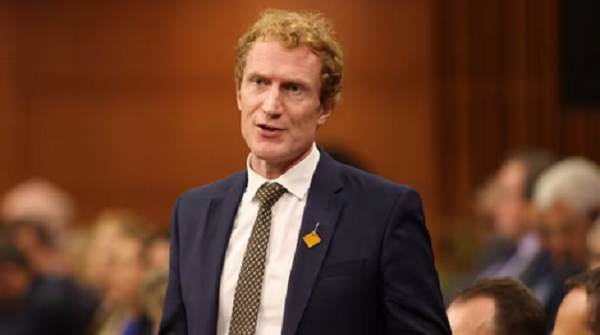New 30-year mortgage to help first-time homebuyers dream come true: Freeman
First-time buyers across Canada and any purchasers of newly built homes will soon be able to stretch their mortgages out an extra five years, the federal government announced Monday — along with other changes builders hope will spur more home construction, but that observers fear could push prices up.
The ability to offer 30-year amortizations for insured mortgages was announced by deputy prime minister Chrystia Freeland in Ottawa on Monday, along with a reduction in the down payment required for homes between $1 million and $1.5 million.
“It is going to put the dream of home ownership in reach for more young Canadians,” Freeland said Monday.
The moves expand on a decision this year to allow 30-year amortizations for first-time buyers purchasing new builds, which took effect Aug. 1.
With Monday’s announcement, a first-time buyer of a resale home who takes out an insured mortgage, which happens when a homebuyer provides less than a 20 per cent as a down payment, could also be offered a 30-year loan repayment instead of a 25-year term. The same would apply for any buyer, first time or not, who buys a newly built home.
The expansion to any new-build buyer was aimed at “creating more demand” for those homes, Freeland said, with hopes that in turn would lead to increasing supply. Despite a housing shortage in areas like the GTA, higher interest rates and construction costs have collided in recent months and caused developers to struggle in launching new projects or getting existing ones to the finish line.
The decision to no longer require 20 per cent down payments on homes over $1 million — with that threshold bumping up to $1.5 million instead — was made to better reflect today’s “economic reality,” Freeland explained.
“The one million level was set in 2012 … it was time to look at that number,” she said.
The new rule changes are set to take effect Dec. 15.
While the news was met with some enthusiasm, with industry players expressing hope sidelined buyers could now enter the market and deliver a needed jolt for homebuilders, the policy changes were also seen by many observers as a spark to demand that could push home prices even higher.
“This is something that’s going to have a direct impact on the buying public as soon as it takes effect,” predicted mortgage broker Mary Sialtsis, who said the changes could make a difference for some of her clients who’d been waiting to see if interest rates ease before buying.
Sialtsis sees the increased threshold for requiring 20 per cent down payments as especially important in major urban centres like Toronto, where the average home is above the million-dollar mark.
“On a $1.2 million purchase, theoretically you would have needed $240,000 to put down. Now, if you can do that with 10 per cent down, that’s $120,000. That’s a big, big difference,” Sialtsis said.
But any kick to an undersupplied market could come with a cost, she said. “Is that going to end up driving up home prices with multiple offers? Sure, there’s a risk of that, because we’re in a chronic housing shortage in the GTA.”
John Pasalis, president of the brokerage Realosophy, sees home price inflation as the biggest risk when increasing household borrowing power.
While some households on the cusp of being able to afford a home would undoubtedly benefit from the changes, Pasalis said, he sees the announcement as a “stimulative policy” aimed at spurring a sluggish housing market, rather than one with a chance of bringing home prices down.
“This is really just a short-term policy fix that’s going to drive home prices higher,” he argued. “Allowing people to take on debt doesn’t improve affordability.”
Mortgage broker Ron Butler added that the down payment threshold change only affected those who could qualify for a mortgage over $1 million. That was limited, he said, to a household with an annual income in the hundreds of thousands — far from the average earner in the Greater Toronto Area — or those able to have a parent or other person co-sign their loan.
David Hulchanski, a housing policy expert with the University of Toronto, sees the goal of increasing housing supply as important. But he, too, has concerns around price inflation if demand is stoked, as well as the impact of allowing people to take on bigger loans. “In Canada, we’re already putting a lot of our financial effort into the housing sector, whereas it could be more productively used elsewhere,” he said. “It’s putting more people in some greater debt.”
The Canadian Home Builders’ Association, in a statement shortly after the announcement, acknowledged the fear about an “inflationary effect” when boosting household borrowing power. But it argued that real estate costs were being driven up faster by a market where demand outstrips available supply.
“If we don’t quickly start building more houses, falling interest rates will create more demand on the limited number of homes available, further driving up prices,” the association warned.
“We need to come at the housing shortage from every angle, and adjusting mortgages rules is a big part of that.”
This article was first reported by The Star













